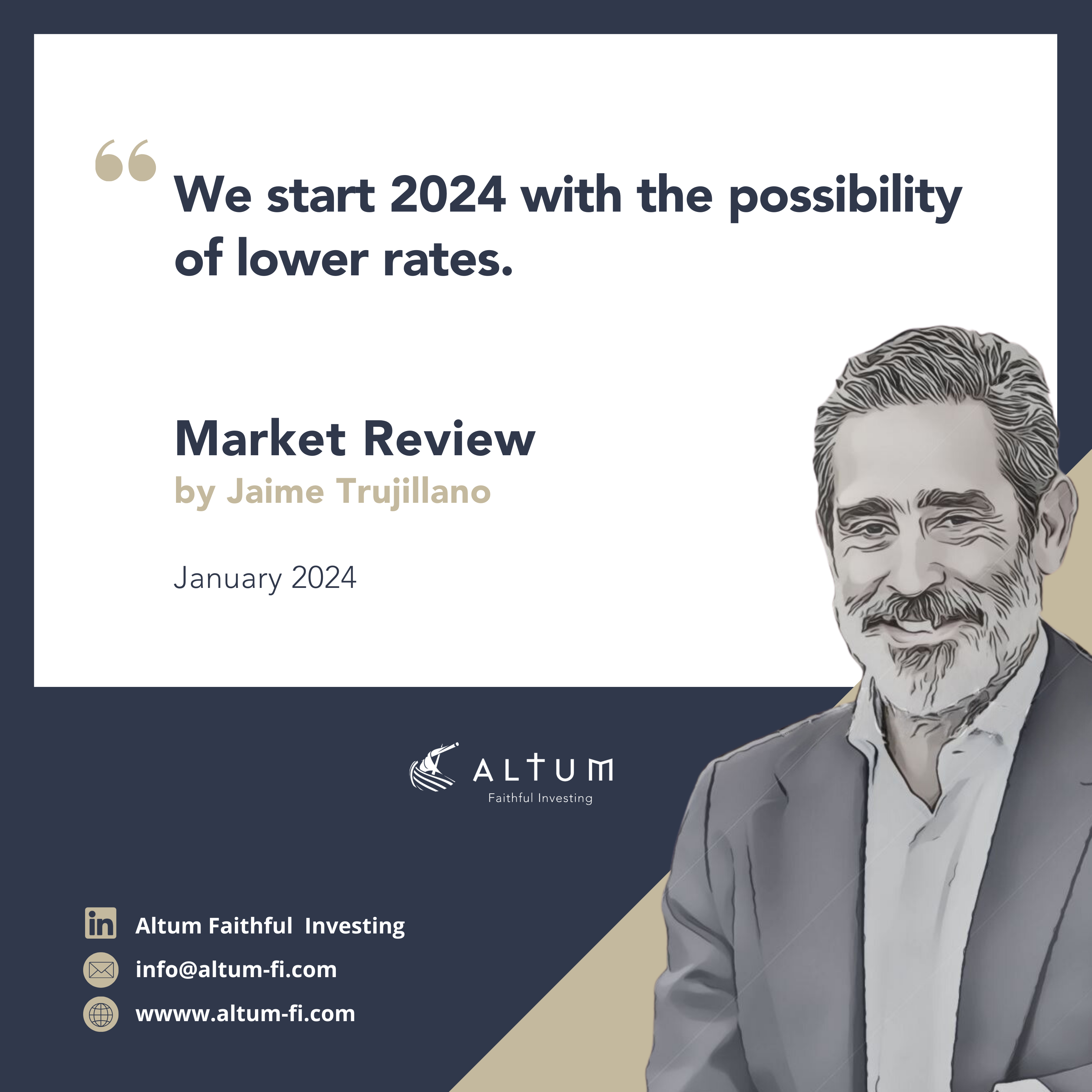We started 2024 with the optimism we experienced during the last two months of 2023, i.e. the possibility of central banks lowering rates during this year. Global equity indices rose, except those of emerging countries, dragged down by the poor performance of China due to the disastrous situation of the real estate market. Global fixed-income indices also rose but were held back by government bonds which performed negatively.
Equities:
– MSCI World: +1.14%.
– SP500: +1.59%.
– Stoxx 600 Europe: +1.39%.
– MSCI emerging countries: -4,68%
– Hong Kong: -9.16
Global fixed income: +0.29%.
One of the big concerns for investors during 2022 and much of 2023 was whether or not we were going into recession. The main reason was that such a sharp rise in rates (to curb inflation) could lead to a sharp drop in activity. So far it hasn’t happened and the current market sentiment is that a “soft” fall in activity is assumed, but nothing dramatic, i.e. the central banks, especially the US central bank, would have achieved their objective of curbing inflation without causing a recession. And that’s it, everyone is happy? I have my doubts, why? (I am mainly using data from the United States because it is a reflection of what is happening in the world)
1 Consumption: in developed countries, it represents 70% and it is one of the variables that has behaved well after Covid and, therefore, has contributed to a very positive GDP recovery in the United States. The latest data showed the US economy growing at 3.3% year-on-year, driven by consumption. This consumption growth is driven by the excess of “forced” savings obtained by American citizens during the Covid (the State was handing out money directly to the citizens to cover the lack of income). This saving is coming to an end (a reference is the increase in the use of credit cards and the request for car loans). If it is ending, consumption will tend to fall and it will not be the sustenance it has been until now.
2 Banking situation: Banks are the main providers of capital for consumption and investment, so the evolution of their business is key. One of the main sources of funding for banks are customers’ current and deposit accounts and until recently they were free of charge. As interest rates rose, many depositors took their money out of the banks and put it into very conservative money market funds, but with interest rates close to 5%. Thus, banks have to compensate for the outflow of liquidity from their accounts by raising the yield on their customers’ deposits to avoid outflows and/or by increasing the interest rate on loans to their customers. In the end, it translates into a higher financial cost for the borrower and, therefore, lower lending, lower consumption, and lower investment.
3 Renewal of loans: In the United States, there is a significant amount of loans to the commercial real estate sector maturing in 2024. They will be renewed at much higher interest rates than they are used to and, therefore, a lower number of loans.
Does this mean we see an impending recession? Not necessarily. There are two fundamental aspects that invite optimism:
1 Business results: there was a lot of pessimism in forecasting results because of rising material and financial costs that would have a negative impact. The results are not being so bad because digitalization (artificial intelligence, for example) is causing all business sectors to have greater cost efficiency and, therefore, better results.
2 Financial situation of banks: Despite the above, the financial situation of banks today is much healthier than in previous crises. They have done their homework and protected their balance sheets so that they are not so fragile.
These last two points suggest that a soft landing of the economy is more likely, but we must be very careful not to become complacent.



